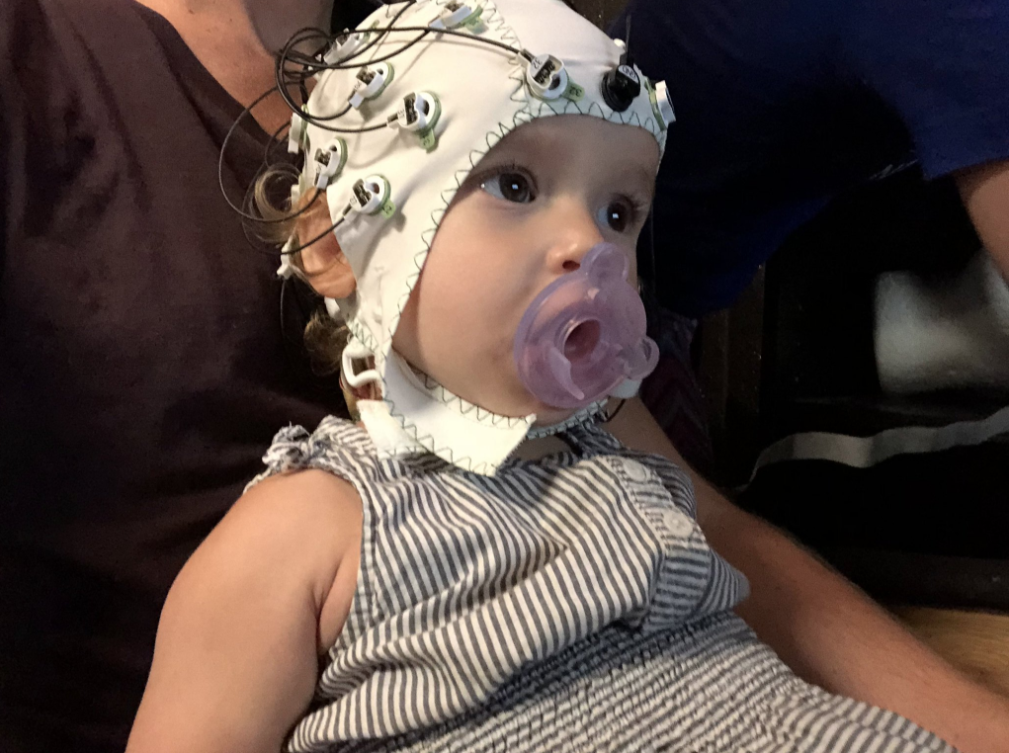eeg test for newborn baby
An EEG electroencephalogram is a test that gives information about the health and functioning of the brain. There is no risk to the baby in having this test.
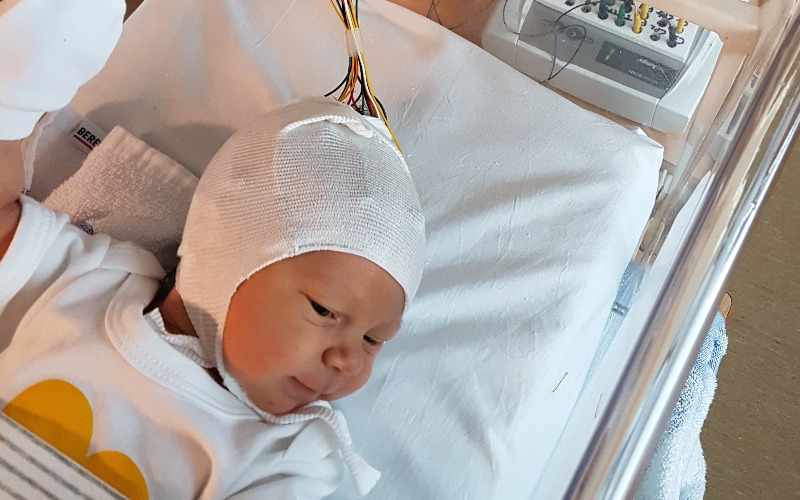
Parental Touch Reduces Pain Responses In Babies Brains Ucl News Ucl University College London
The best estimate of the degree of damage or dysfunction can be made when the EEG documents the evolution of the abnormality over time.

. What is an electroencephalogram EEG for children. Brain cells communicate via electrical impulses and are active all the time even during asleep. An EEG tracks and records brain wave patterns.
Once in a great while seizures in newborns and infants are caused by a deficiency of vitamin B6 pyridoxine. An electroencephalogram EEG is a test that measures electrical activity in the brain using small metal discs electrodes attached to the scalp. A newborn baby usually passes urine for the first time within 12 to 24 hours after birth.
How do you test for the Babinski reflex in babies. 10 by 10 years. The EEG is most useful at telling us if there is a tendency to have fits or seizures.
In this paper the authors used a dataset of 397 EEG records detected at birth of premature newborns and their classification by. Brain activity during brain surgery or a coma. Called the Neuropsychiatric.
4-5 by 6 months. The FDA approved the use of electroencephalogram EEG to diagnose ADHD in 2013. The diagnosis can be established by seeing whether the seizures improve when vitamin B6 is given by mouth or by recording the EEG while.
Likewise how long does an EEG take for a baby. It can help healthcare providers decide what treatments your child needs. The brain dynamics and connectivity in different states awake or asleep can be defined and a whole range of acute or chronic cerebral disorders can be identified.
It is important to recognize the deficiency because it is a very treatable cause of seizures. An electroencephalogram EEG is a test that detects electrical activity in your brain using small flat metal discs electrodes attached to your scalp. Click to see full answer.
An EEG is a test of electrical activity of the brain. After the first month of life a baby graduates from being a neonate to an infant and thus also graduate from the neonatal montage to a standard 10-20 montage in terms of electrode placement. If your child has a seizure disorder your doctor might want to stimulate and record a seizure during the EEG.
7 by 2 years. Small metal discs with thin wires electrodes are placed on the scalp and then send signals to a computer to record the results. Thats why some doctors use a physical test to look for changes in brain patterns.
Newborn screening tests may include. Subsequently question is why would a newborn need an EEG. At some time in the examination a flashing light may be used to see if this changes the activity of the brain.
Children older than age 2 and adults who still have the Babinski reflex or have an abnormal one may have a problem with the brain andor spinal cord including. The electrodes will pick up activity in the brain. These data reveal that only one unchanged EEG with ECS and the newborns examination remains unchanged for 24 hours is confirmatory of BD 18.
Normal electrical activity in the brain makes a recognizable. EEGs are very safe. Ad An Innovative Remote-Based Tele-EEG Solution that Delivers Real-Time Monitoring Services.
Some babies are given a sedative before the tests so they are more settled. The first year of life on EEG is characterized a. 9 by 8 years.
Brain infection disease or injury. ECS on the first EEG study that remains isoelectric on a repeat study or normal EEG on the first study that is followed by ECS on a second study confirms BD diagnosis. An EEG is a test that measures the electrical activity in your childs brain.
An electroencephalogram EEG is a test used to find problems related to electrical activity of the brain. A neonate is a newborn baby less than 4 weeks of age. This activity creates patterns that can be seen on a computer screen.
Typically as time passes the degree of abnormality lessens. An abnormal Babinski reflex could indicate that theres something wrong with the signals the brain is sending to the spinal cord. An EEG is one of the main diagnostic tests.
Taking into account the CA a neonate is a newborn infant with age EEG interpretation. The EEG usually takes about half an hour. All were deemed normal and we were released from.
Not peeing in the first 24 hours points to some urinary tract problem. An electroencephalogram EEG is a test that measures the electrical activity in the brain brain waves. Newborn babies less than four weeks of age are termed neonates and their EEGs reflect the rapid development of their brain in that timeThe normal neonatal EEG exhibits many characteristics that would be grossly abnormal in an adult including diffuse slowing discontinuity asynchrony and minimal reactivity but all of these unique characteristics should evolve in normalized.
6 by 1 year. An example is a 4-week-old baby born at 30 weeks GA would have a CA of 34 weeks. An EEG usually takes about 60 to 90 minutes.
8 by 3 years. EEG is a signal that measures the electrical activity of the brain. This activity shows up as wavy lines on an EEG recording.
Special soft padded wires called electrodes are placed on the scalp. Neonatal electroencephalography EEG in infants has become valuable as a serial noninvasive screening tool for infants at high risk of perinatal injuries. Ideally the initial electroencephalogram EEG examination should be done within the first 24 hours after birth or after a suspected brain insult.
An EEG can help diagnose or monitor any of the following. As the mother and her baby need to stay in the hospital for 24 to 48 hours after a normal delivery it becomes easy for the doctors to diagnose the condition early. When Your Child Needs an Electroencephalogram EEG.
A key part of the pediatric EEG is its evolving PDR discussed in detail below but summarized as follows. A brain tumor or injury. Normal EEG activity arising from the two hemispheres or homologous brain regions should be essentially symmetrical at any age including the newborn.
Small round discs with wires electrodes are placed on the scalp during the test. An electroencephalogram EEG is a test that measures the electrical activity in the brain brain waves. It may be difficult for the reader unaccustomed to pediatric EEGs to accurately judge whether the absolute quantity of various frequency elements is normal for age but it is still possible to.
The electrodes are not painful to your child.
Eeg Vep And Bera Dr Jeevan Silwal
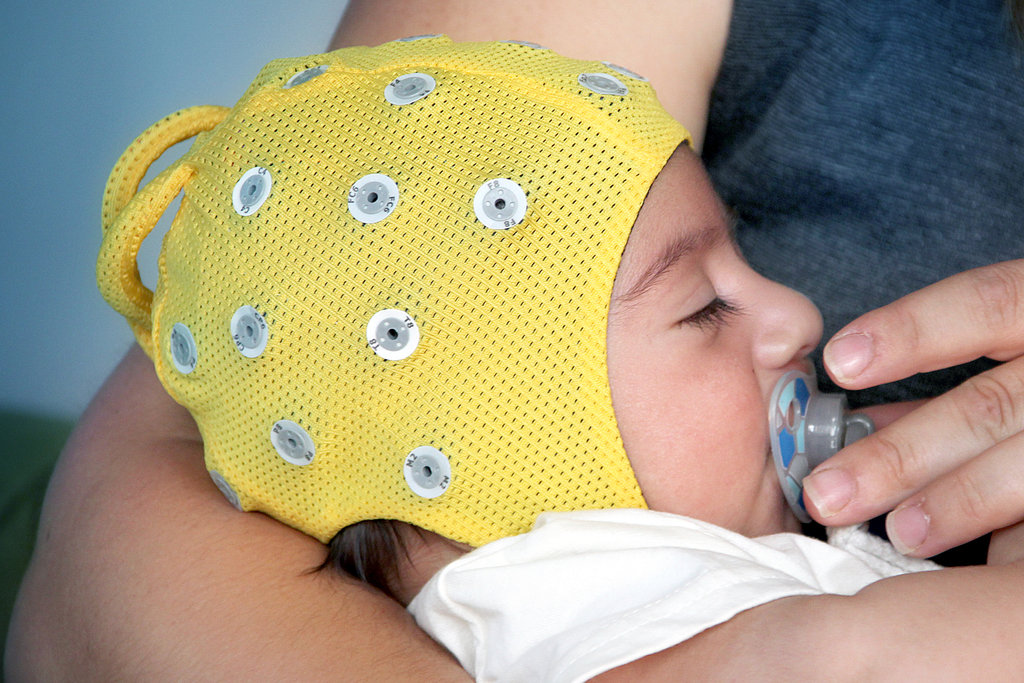
Baby Eeg Cap Waveguard Size B 36 39cm Ternimed

Neonatal Brain Health Monitoring Cadwell Industries Inc

Development Of Eeg And Sampen In Normal Sleeping Newborns Download Scientific Diagram
The Developmental Eeg Premature Neonatal Infant And Children Electroencephalography Eeg An Introductory Text And Atlas Of Normal And Abnormal Findings In Adults Children And Infants Ncbi Bookshelf

Baby S A Moderately Abnormal Background Electroencephalogram Eeg Download Scientific Diagram
Unl Newborn Infants At The Hospital Developmental Brain Laboratory
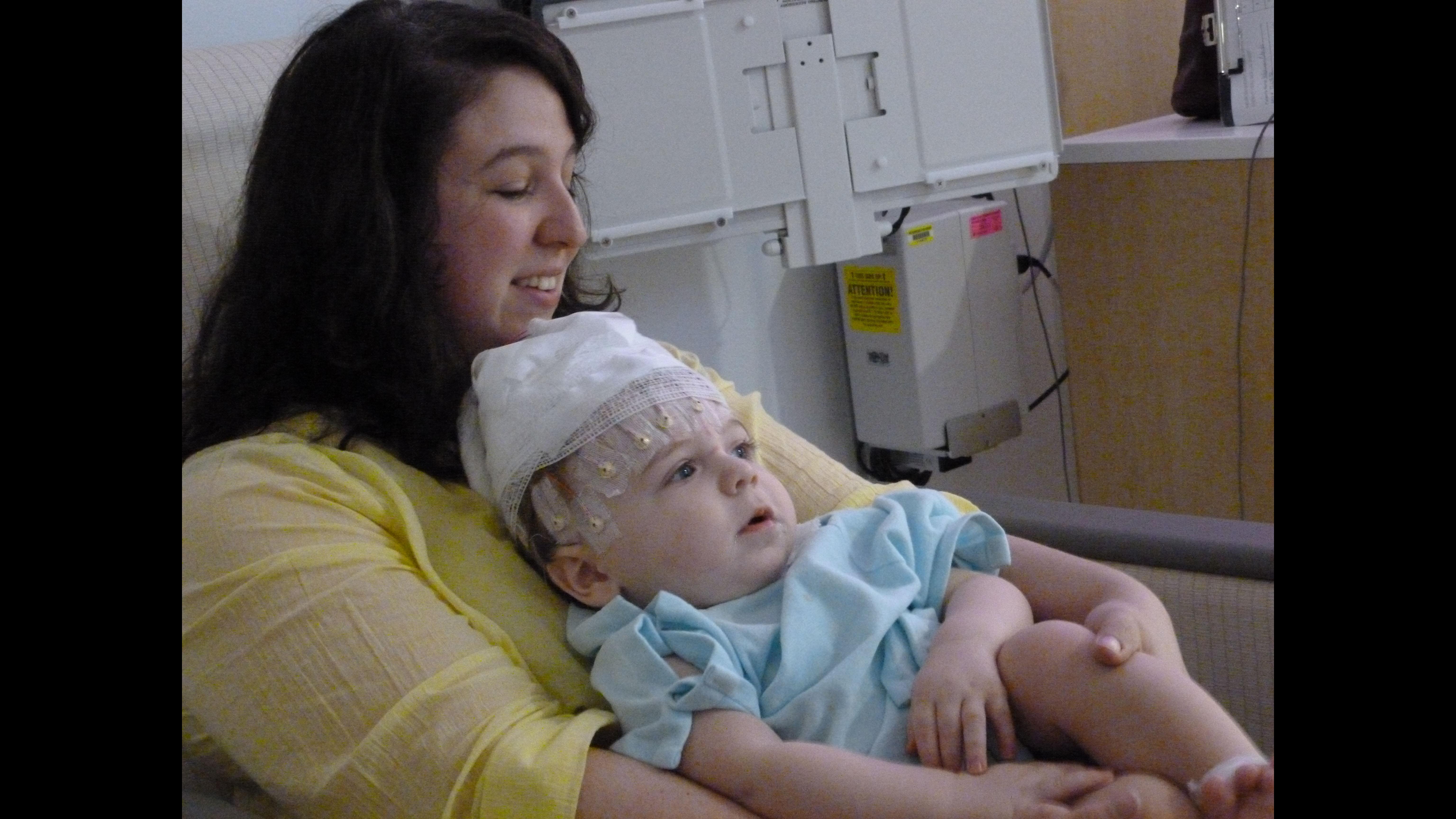
Mother Inspires Hope Raises Awareness Of Rare Infant Seizure Disorder Chicago News Wttw

Babies With Eeg Nets Youtube Otosection

Baby S A Moderately Abnormal Background Electroencephalogram Eeg Download Scientific Diagram

Baby Stella Gets An Eeg Youtube

Infantile Spasms Primary Steps For Primary Care The Arcuate Neuroscience News
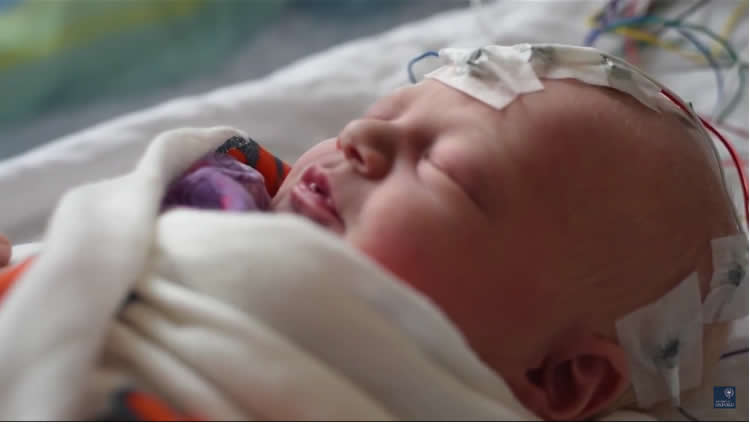
Using Simple Brain Scan To Detect Pain In Infants Neuroscience News

An Eeg Segment Of A 40 Week 2 Day Old Female Documenting A Low Voltage Download Scientific Diagram


